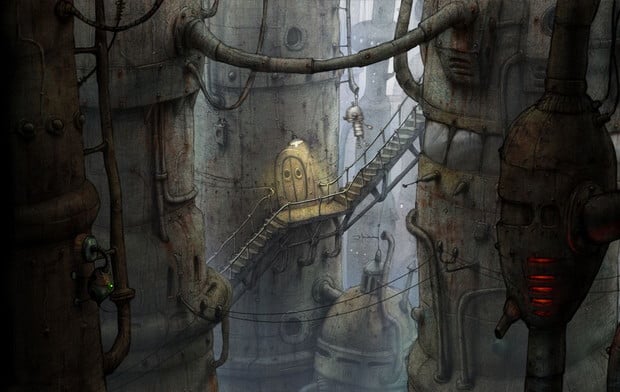

Buy it now.Amanita Design’s Machinarium brought wide attention to their new approach to the point-and-click puzzle adventure for the way it brought together hand-drawn aesthetics, baffling logic puzzles, social commentary, sympathetic and adorable character design, wordless pantomime, and above all else subtlety. It’s currently available on GOG or Steam for $9.99. I appreciate that Amanita Design designed Botanicula with a more casual audience in mind, but they likely could have afforded to trade some of the game’s charm for challenge.īut who cares? Botanicula is a pristine point-and-click adventure game and likely my favourite game of 2012 so far. Veteran adventure game players will find themselves sleepwalking through the early levels, and even the final act will only provide a modest test of their puzzling aptitude. My sole complaint about Botanicula is the difficulty curve. Amanita Design must save a hell of a lot of money on localization. It still floors me that anyone in the world, regardless of language, could pick up the same copy of Botanicula as me and play it effortlessly. In any other game this may have become confusing, but the little twig and leaf characters are so expressively animated that they rarely lead the player astray. The denizens of Botanicula speak in muffled gibberish, instead conveying their meaning through speech bubbles filled with doodles. I’m repeatedly impressed by Amanita Design’s ability to convey narrative in their games without any text or spoken dialogue. The attention to detail in Botanicula is staggering, and rooting out these hidden treasures is satisfying on a childlike level. There are dozens of Easter eggs like this in every level, and each one rewards you with an achievement for finding it. On the last click, he pulled out a grinning jack-o-lantern, and tinny banjo music cascaded out of my speakers. In one instance, I clicked on an unassuming ant-like creature again and again to discover that every time I did so he would haul a larger load out of his leafy home.

Click on something – anything – in the environment, and you’ll be treated to a short vignette, animation, or puzzle. Hats off to Amanita Design for challenging themselves with their art direction and then rising to that challenge – the game is gorgeous.Ĭharm is Botanicula’s currency, and the title is eager to spread the wealth. The cut scenes remind me of The Very Hungry Caterpillar. The environments are patchwork landscapes of nature photography and loose-handed doodles. Characters are nuts, leaves, or twigs with googly eyes drawn on them. Machinarium’s world was one built of rust, concrete, and light bulbs Botanicula’s is like hopping from page-to-page in a child’s scrapbook of leaves. This is a refreshingly streamlined approach shared by Amanita Design’s other offerings, and it makes Botanicula easy to jump in and out of.Īlthough Botanicula’s gameplay is similar to its predecessor Machinarium, its aesthetic couldn’t be more different.

The game focuses less on inventory management than its genre mates, instead relying on single-screen puzzles. The player controls a small walnut-like creature and his four friends, navigating through an enormous tree in order to stop their home from being destroyed by villainous spider creatures.
Machinarium vs botanicula series#
Botanicula, however, has managed to penetrate my icy heart.īotanicula is a point-and-click adventure game made by Amanita Design, the Czech developers responsible for the Samorost series and Machinarium (likely my favourite game of 2009). I’ll reflexively bat my hand in disgust at mainstream titles, all too eager to throw them to the lions over their perceived sacrilege to the classics. In my old age, my nostalgia for the golden era of gaming often blackens my judgement. I’ve been accused of being too erudite in my tastes.


 0 kommentar(er)
0 kommentar(er)
